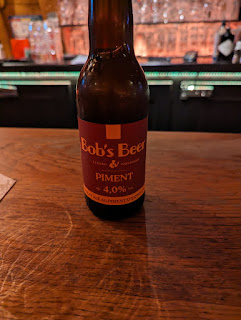39 - Got nothin' to Luz - Dax, Cibourne, & St Jean de Luz
Sunday, 14 January 2024
St Paul Les Dax
It was an easy start to the day. I woke up with a bit of soreness from yesterday's hike, with a forecast of rain/drizzling in the afternoon I opted for a less ambitious day. To start, I had my late breakfast of coffee and leftover txantxigorri cake (purchased in Pamplona) which might just be the next breakfast of champions.
Since it had looked so appealing when I went to the pool, I decided to take a walk around the Lac de Christus in St Paul les Dax. And it was a very pleasant walk: the lake was a reflective surface whose only ripples came from the geese paddling about. There were plenty of other people walking or around the lake and the geese provided a wonderful symphony of chaotic honking.
Cibourne / St. Jean de Luz
From St Paul Les Dax, I made my way down to St Jean De Luz with Fort Socoa (apparently Socoa is Basque for "corner") in the GPS as my first destination. A wrong turn to the parking lot had me driving along the cliffs and gave me an opportunity to pull over and smell the sea breeze while nervously approaching the edge.
Afterwards, I found the fortress and seawall were a relaxing visit: the waves were much calmer today but it was evident that the sea fortifications for the bay of St Jean de Luz were still hard at work.
While walking around the fort, I felt like people were looking at me more than normal. I'm not sure what it might have been but I think I received a hint from a young child asking his parents a question; the mom replied "haha non, c'est juste un beret pas un gendarme". Did my beret make me look like I was a police or military person?
The drive from Socoa to St Jean de Luz took me around the protected water's edge and through the heart of the town of Cibourne, which appears to have an active fishing port. I found the Basque architecture in both Cibourne and St Jean de Luz really charming. St Jean de Luz didn't have very many restaurants open and there weren't many plazas but I enjoyed my tour on foot through the historic downtown.
There were several historical info plaques scattered about that I enjoyed finding. They detailed some interesting tidbits like:
- Before the partial enclosure of the bay, the city lost almost 2/3 of its habitable space to erosion and flooding.
- Part of the population in the area was named kaskarot (meaning "of little value"), an ostracized and persecuted group expelled from Spain. Treated kinda like lepers, they were kept separate and distinct from the village, were forbidden from marrying into the town, drinking from fountains or handling food.
- Victims to the occasional state backed massacre or witch hunts, they found refuge in Basque country where the parliament of Navarre protected them. The men were often away for months fishing and the women were known for running fresh fish from the docks to the market bare-foot.
- Much of the wealth in St Jean de Luz was related to its inhabitants maritime prowess. First with whaling, then with cod fishing, and then as privateers (corsaires)!
I eventually took a break when it started to lightly rain. I popped into "The Corsair Bar" hoping to nab some tapas and a drink but had to settle for just a beer as their kitchen wouldn't open till 6:30. I'd hoped the rain would have let up during my break but sadly it continued and I finished walking the length of the beach before breaking again for a small gateau Basque à la cerise, which may have been the single most delicious thing I've ever eaten (or I was just really hungry).
I popped my head into the church of the old town (it kept getting mentioned in "things to do" articles) and was impressed with the decoration inside. I didn't stick around for long, 6:30 service was about to start and the priest came by to shake my hand. It looked like there was a small bake sale by high schoolers in the back of the church; it was hard to tell as they all were standing in front of the table to I could barely see any of the goods or signage.
I played around with the idea of staying around in St Jean de Luz for dinner, there was a gastronomique place that sounded pretty snazzy and spending the afternoon by the water had me in the mood for fish, but I realized that I just wasn't having much fun wandering around while damp and waiting for dinner time with a drink at a tavern didn't seem like it would improve the situation by much. So I packed it in and returned home to cook dinner: a cuisse de canard confit I bought at a grocery store (just needed to be seared and reheated), potatos in duck fat, and steamed carrot.










































Comments
Post a Comment